Have you noticed that your customers interact with your brand multiple times before purchasing? Maybe they sign up for a newsletter to get a 10% off coupon, followed by reading a blog article, looking at your product pages, going back to your blog, and finally, making a purchase.
These interactions are all a part of your customer's journey and are only one of many examples of how your customers might interact with your company while moving through the customer journey stages.
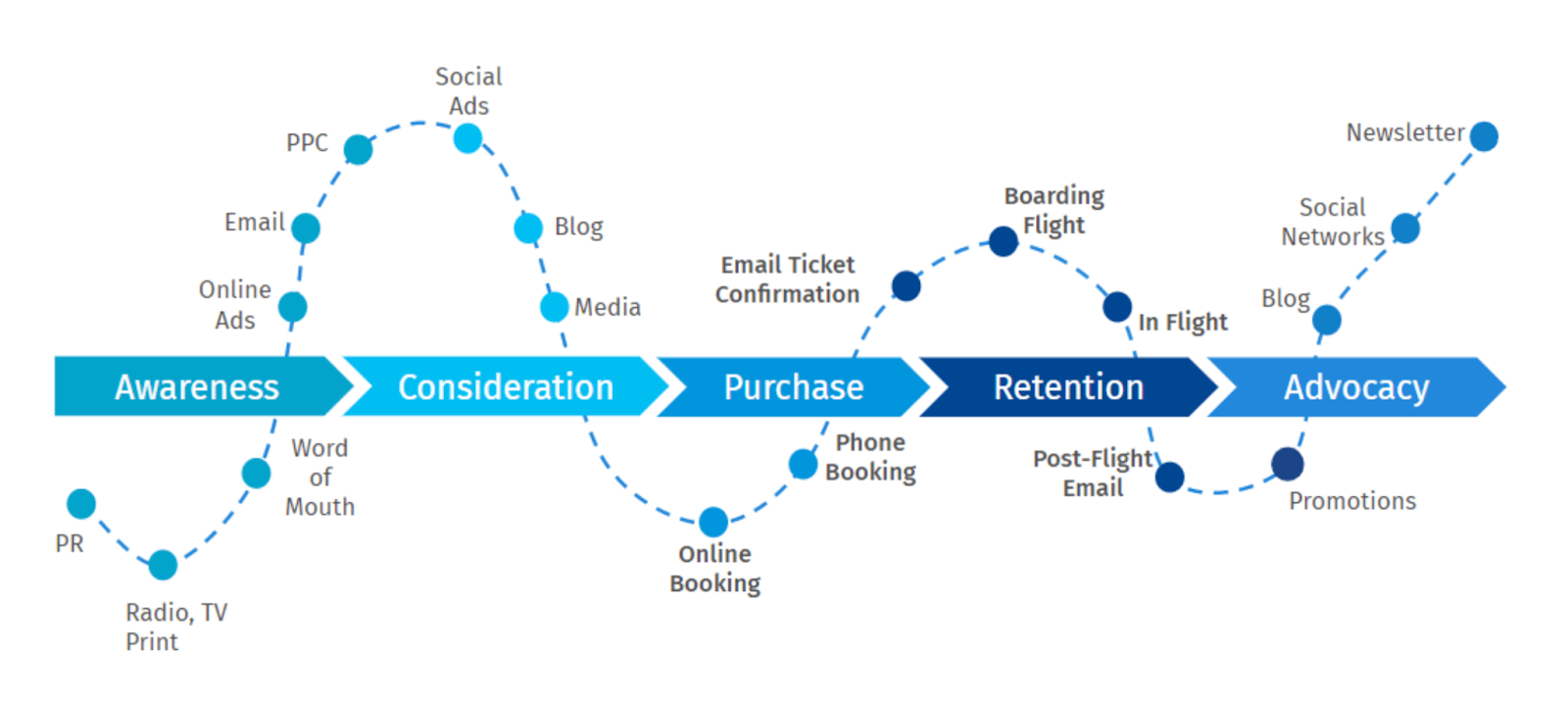 Source: QuestionPro
Source: QuestionPro
Not only that but there are marketing opportunities well beyond the initial purchase.
There are still opportunities to foster the overall customer experience and their interactions with your brand.
Up-sell another product, encourage them to tell a friend, or get them to interact with your brand by promoting blog articles.
Customer journey marketing isn't an entirely new strategy; however, organizations have realized the importance of the journey-based approach to improving their customer's experience over the past few years.
Woopra’s products are designed to support organizations in understanding their customers’ journeys and provide effective journey mapping through valuable product analytics and customer analytics tools.
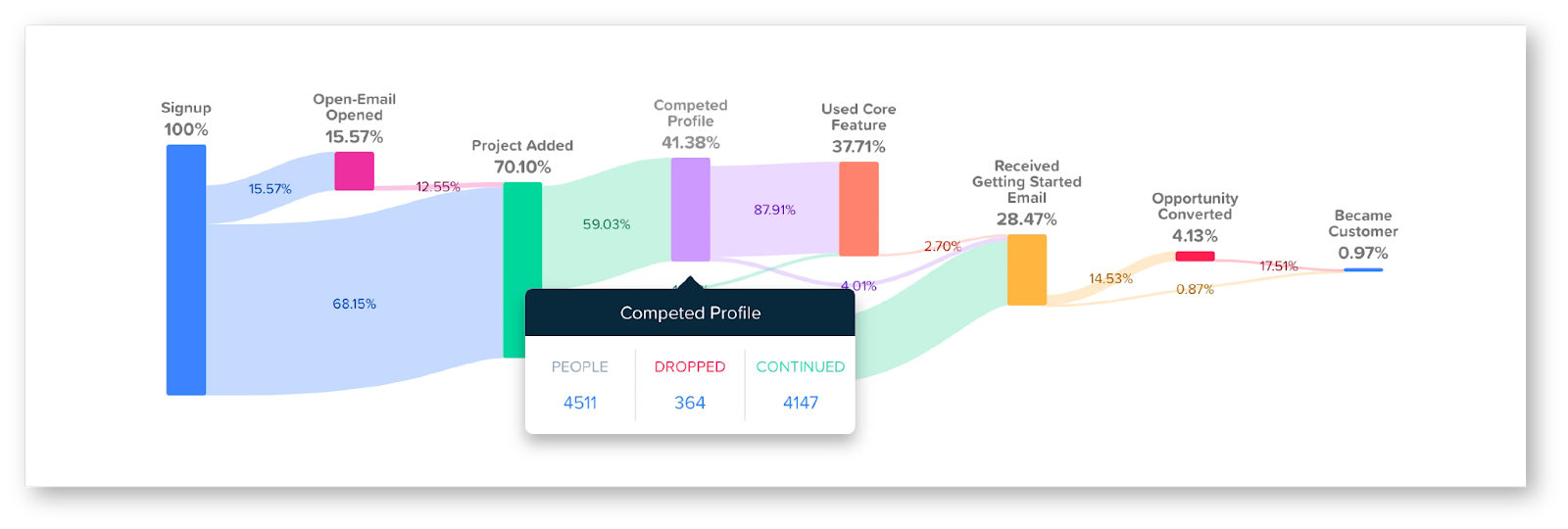
This article will dive into what customer journey marketing is, how to utilize it to improve the customer experience, and how your marketing should map each one of the customer journey stages.
What is Customer Journey Marketing?
The customer journey combines all of your customer’s interactions at various touchpoints with your business/brand over time.
By understanding the progression that your customers take across multiple touchpoints and condensing everything into a customer journey map, you can begin to know where along in the journey you are, either creating barriers or opportunities for your target audience.
Touchpoints can be anything from visiting multiple websites, opening an email, seeing an ad, going to your social media pages, or receiving a customer survey. Every customer interaction is a touchpoint that affects the customer experience. Here’s a customer journey map example.

Tracking this data on your own isn’t easy. But by using customer journey analytics, you can quickly and efficiently see customer journey mapping data that can help smooth out your customer’s journey and create a path of least resistance.
The benefit of using a customer journey mapping tool to analyze your buyer journey is that you can better understand your business, products/services, and customers. You can also use the insights gained from customer journey mapping to provide better customer service and ultimately, improve the customer experience.
This is just some of the information you can uncover once you’ve mapped a customer journey:
- Have a better understanding of what’s holding back your customers from purchasing.
- See which customer touchpoints are causing customers to drop off the journey map.
- Understand how successful the onboarding process is for addressing customer needs and how it’s affecting customer retention.
- Know if up-sell or cross-sell techniques are working.
- Create a logical order for the buying journey map for a more fluid customer experience.
- Uncover which customer segments are performing the best.
Marketing During Each Customer Journey Stage
The following uses the marketing funnel framework in conjunction with the three customer journey stages, encompassing everything from building awareness to customer experience management to advocating for your brand.
Let’s go through the three main stages of the customer journey: Acquisition, Activation, and Adoption.
Acquisition
At the acquisition stage, your audience is likely unaware of your business. However, the buyer is on the hunt for a solution to their problem.
You’ll want to engage in a brand awareness strategy that helps your target audience understand your value right away and how you can solve their problem.
A company could do this through various touchpoints, such as Google or social media ads, SEO, downloadable PDFs, offline billboards, and flyers.
A buyer who has engaged with an ad or another touchpoint without exiting has now turned into a lead in the customer journey map.
These people are taking the time to find out more about your business and the products or services you offer.
They do this by actively seeking you out, most likely heading to your website where they could be reading blogs, signing up for a newsletter, or asking customer service questions via a chat box.
At the end of this stage, they are transitioning into a prospect, which means they are a potential buyer for your particular product or service and are considering making a purchase.
You’ll want to provide an amazing customer experience and show how you differentiate from your competitors through your key benefits and showing you are the experts.
That could be through a phone call, sending a proposal, a retargeting campaign, trial periods, giving free samples, or product demos.
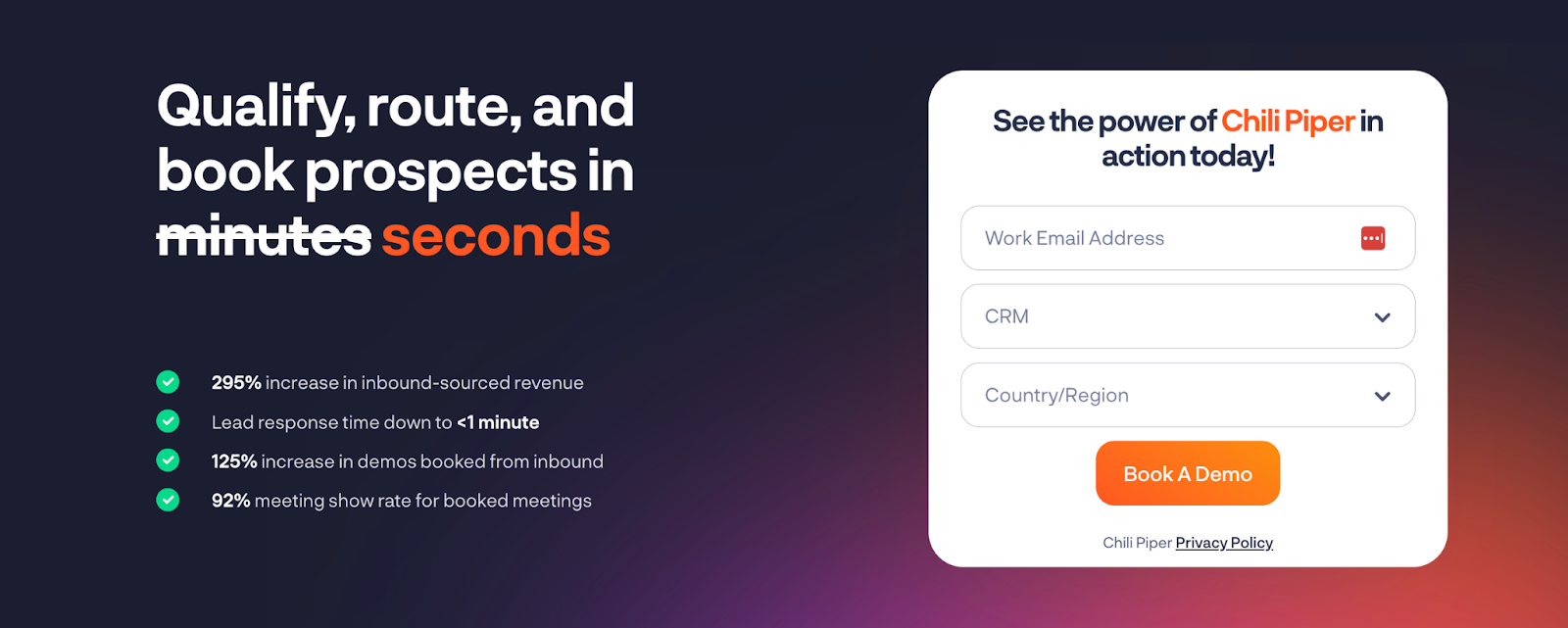 Source: Chili Piper
Source: Chili Piper
Activation
At the activation stage of the customer journey map, the prospect has purchased your product or service; they have now become a customer or user of your business, taking them further along the user journey mapping stages.
For an eCommerce or on-demand service, the first part of the activation stage is the purchase.
It’s essential to make the check-out cart and purchasing process as easy as possible for the customer so they have an enjoyable customer experience and don’t get frustrated and buy somewhere else.
During this stage of journey mapping, you’ll want to provide the customer reassurance and confidence that they made the right decision, which is where a successful onboarding process or quick interaction with the customer is highly important.
Successful onboarding is especially vital for B2C and B2B companies and can include anything from automated onboarding to personalized onboarding for higher-touch customers.
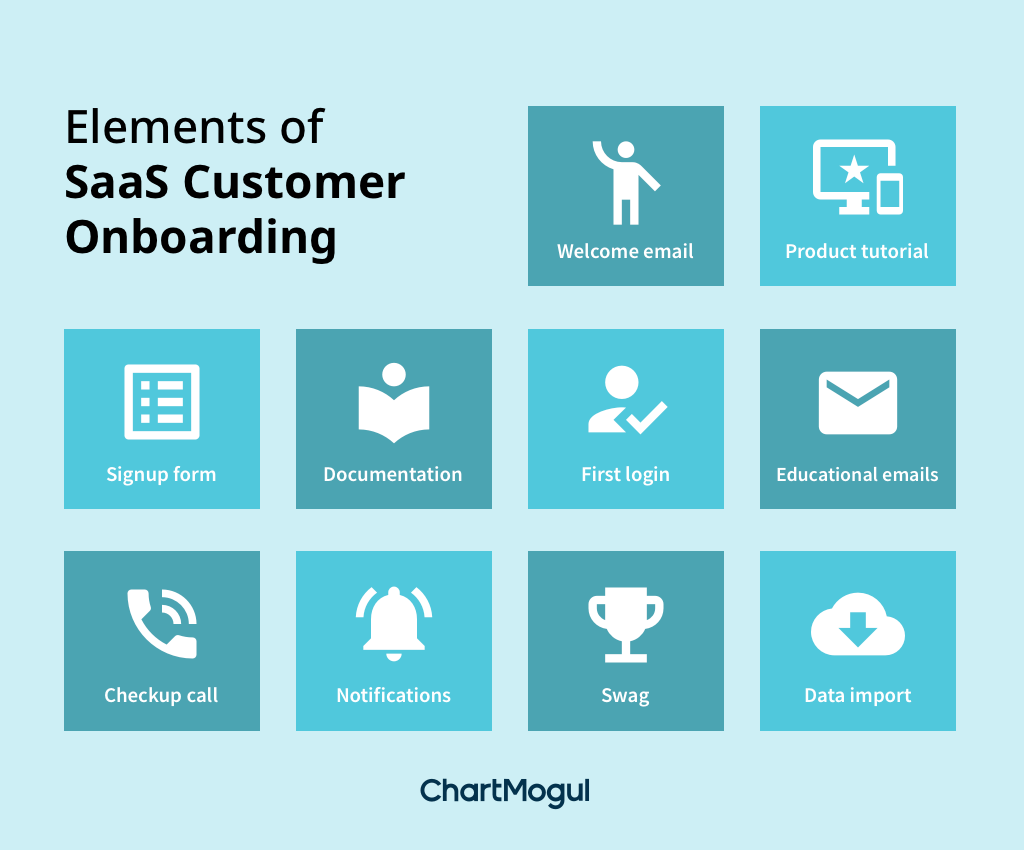 Source: ChartMogul
Source: ChartMogul
The most important part of the activation stage is your first opportunity to turn your customer into a promoter of your business rather than a detractor.
As such, it’s essential to analyze the customer success of your activation strategy through surveys and customer feedback, using that information to continually improve it and refine your service blueprint.
Adoption
At the adoption stage of journey mapping, your customer has the chance to become a repeat client.
It’s vital to nurture the relationship and show you care about their business with you; this is your chance to delight the customer by learning more about them and offering them new personalized products, services, or discounts.
Alternatively, it could improve their already current services to entice them to continue with subscription renewals.
Transactional businesses will generally keep a thorough profile of each user to match these personalized offers better, whereas a SaaS business will more often send out satisfaction surveys.
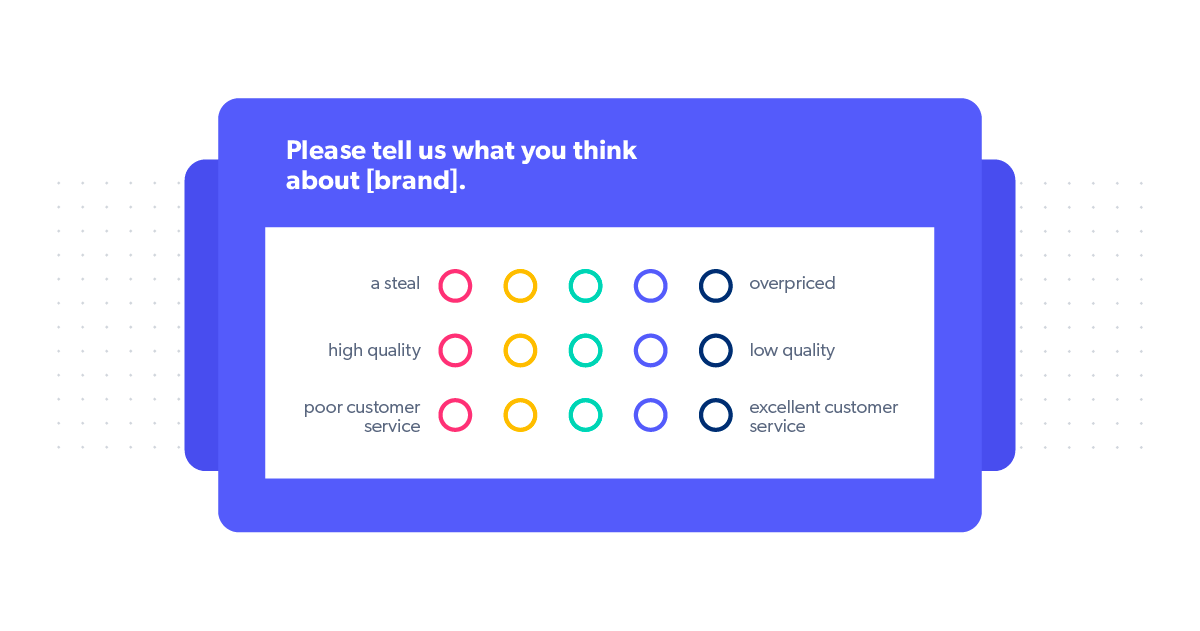 Source: Bazaarvoice
Source: Bazaarvoice
At this stage of the customer journey map, clients also become promoters/advocates; they already trust you and want to tell people they know about your company.
You can support this and other areas of the adoption stage through touchpoints such as loyalty programs, customer dashboards, referral bonuses, easily shareable content, and other actions that get them involved with your brand.
It’s important to remember that each of these are interactions your customers have with your company.
From ads and social media posts to the onboarding process and referral bonuses, these are all touchpoints that help advance users through the customer journey.
By using the customer journey stages as a framework and Woopra’s customer journey analytics, you can discover which touchpoints are helping move users through the stages or not and make the necessary adjustments.
What Does the Customer Journey Mean for Businesses?
Not all customer journeys are the same, which is why every business should take the time to map out the unique steps their customers take.
Some companies may have multiple buyer personas, which means there could be multiple customer journeys.
This process may seem daunting, which is why Woopra helps companies find their various touchpoints and lays them out in detailed Customer Journey Reports, which you can find in the next section.
Here are a few real-life customer journey map examples so you can see what journey mapping looks like.
SaaS Company Customer Journey Report

A SaaS company would have a customer journey map template similar to this, where all their various touchpoints are mapped out, and you can easily see what’s working well and what isn’t.
Woopra does this by taking a customer’s data from multiple channels within the company and using SaaS Analytics to turn it into useful reports to discover:
- What healthy customers look like in terms of engagement and activity
- The product features that drive the most engagement and provide a positive customer experience
- How subscription revenue is trending based on plan type and company type
Below is an example of what a touchpoint could look like from the Customer Journey Report, a “Free Trial Signup.”
A typical SaaS company incentive, like on the FreshBooks website, where they have added not just one of these buttons but numerous to create the least amount of friction so their customers continue along the customer journey to eventually sign up for the accounting software.

Finance Company Customer Journey Report

A finance company that sells insurance or stock market services may have a customer journey map template that looks like this one.
Woopra also has customer data platform solutions for banking and finance companies, where Woopra will do the heavy lifting of compiling their customer data into reports, helping find out:
- The financial products that clients are most interested in
- Frequency of clients logging in to their accounts to check their portfolio performance
- The marketing campaigns that bring the most qualified leads
The following is a real-life example from the Finance Company Customer Journey Report above showing the “New Visitor Registration” touchpoint. This financial company, WallStreetZen, has a two-step process to register new visitors as a customer for their stock research tool.
Once a customer has finished these steps, they would be moved to the next journey touchpoint, “Complete Profile.”
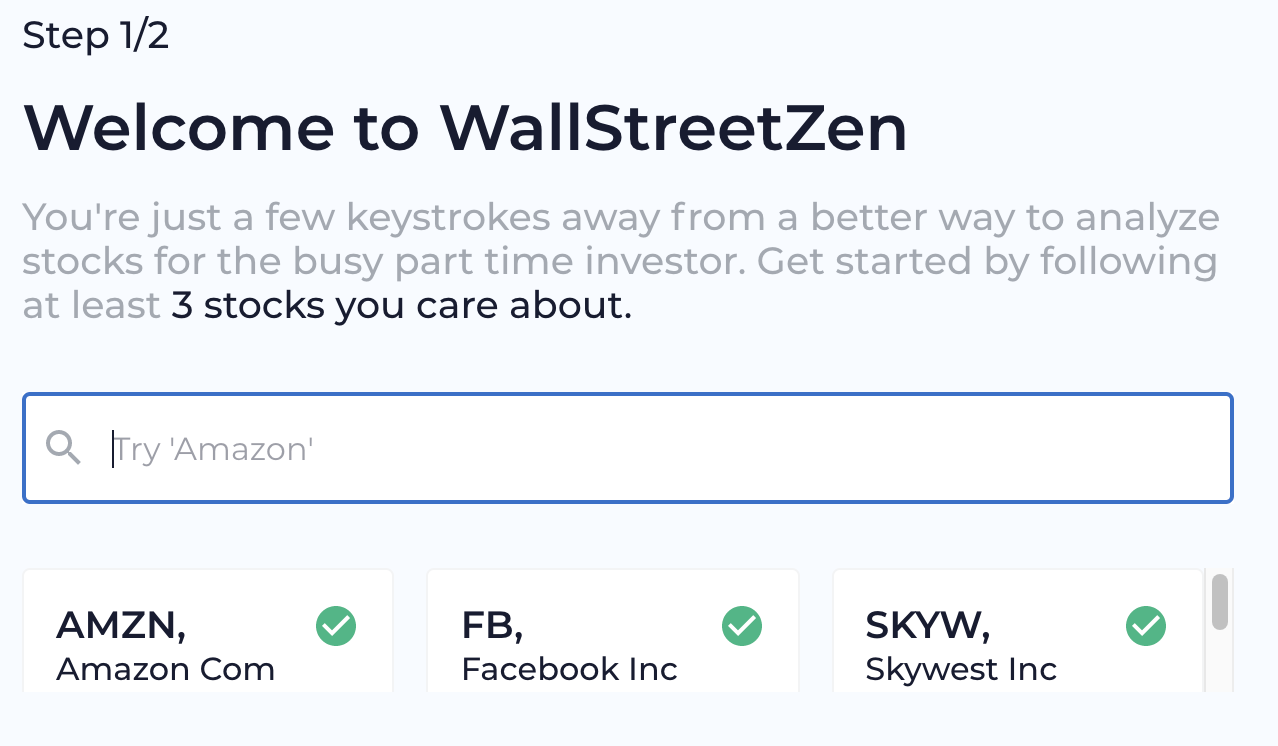
Content Company Customer Journey Report

Here, companies that rely on content creation to drive growth would look at Customer Journey Analytics for content and media to find out how readers are consuming content, what content they’re reading, and help create loyal followers.
Again Woopra looks at company data across various channels and compiles it into customer journey mapping reports to find out:
- How often users share and comment on the various content
- The most popular authors
- The topics visitors are most interested in
Another touchpoint example from the customer journey would be a “Welcome Email.”
Suppose you are a company that produces targeted content to drive growth.
In that case, having a welcome email after they sign up for a newsletter or a dashboard helps to assure the customer they are a part of the community, like what this company does below, Loganix, which offers SEO packages.
It also moves the customer to the next stage of the customer journey.
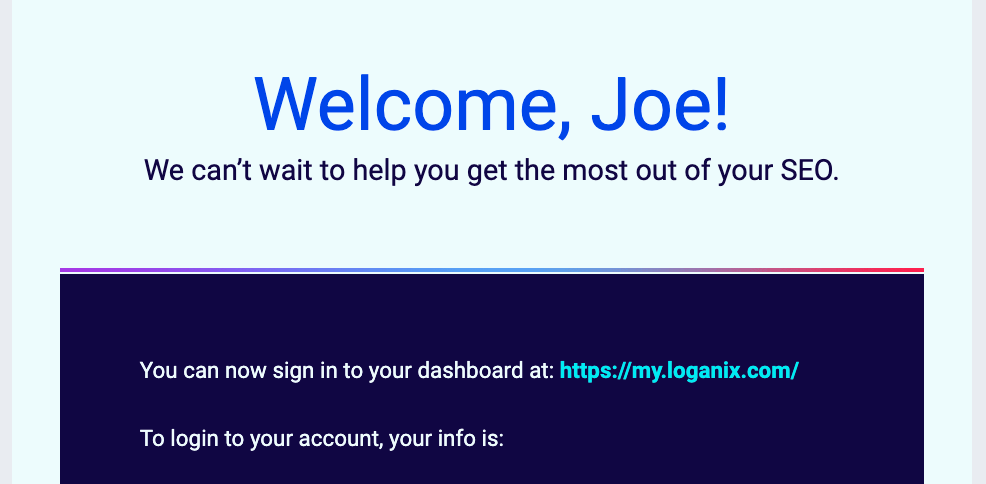
However, before you start mapping out your unique customer journey, you have to understand the various stages of the marketing funnel that, ideally, the customer journey should mirror.
Customer Journey Marketing Tips
While your real-life marketing efforts and your customer journey map template may not always perfectly align, they should work in conjunction to create a user-friendly path that ensures you are utilizing your marketing components at the appropriate stages and to the right leads.
Here are a few tips for utilizing the customer journey stages in your marketing:
Customize The Journey
While the customer journey marketing framework is a great starting point, you may not focus on each stage equally.
For example, some companies are great at activation but terrible at acquisition. If that’s the case, customize your marketing efforts so that they focus on the stages that YOUR company's customer journey needs to improve.
Customization can also include identifying which marketing channels are the most effective and which aren’t carrying their weight.
Once you know which channels are working, you can then put more attention on them to increase engagement and create a smoother customer journey.
Conversely, if you notice a larger-than-average dropoff with certain marketing channels, you’ll likely want to make changes or consider scrapping them altogether.
Besides that, customizing the customer journey relies heavily upon personalizing your marketing content with fully tailored messaging throughout each stage.
For instance, this could involve sending personalized emails via marketing automation at critical times when leads are likely to be most responsive.
Or, you could send personalized product recommendations based on the particular stage of the customer journey someone is at, the interactions they’ve had with your brand, or the specific marketing persona they fall under.
This brings us to our next point.
Flesh Out Marketing Personas
Just as personas are integral to understanding who you’re trying to reach with business in general, they’re also essential to optimizing the customer journey.
Having fully crystalized marketing personas allows you to break down customer behavior, interactions, pain points, goals, and more to better enable your brand to deliver the right marketing message at the right time.
That’s why it’s important to flesh out your marketing personas, with each customer persona representing an archetypal customer within a given segment.
Creating marketing personas for the customer journey involves the same general process as creating traditional buyer personas.
It relies on collecting data about customers through analytics, breaking customers down into segments based on shared behaviors and characteristics, creating detailed profiles with visuals, and so on.
But in this particular context, you’ll want to focus on creating segments for each stage of the customer journey.
For example, you might have one buyer persona that consists of individuals that go from being first-time visitors to signing up for a free trial.

You might have another buyer persona that goes from starting in-app messaging to activation.

And another buyer persona that goes from receiving a promo email to upgrading to a paid version of your product.

Whatever the case may be, the goal is to create a detailed marketing persona for each stage so you can better understand your customers, improve your interactions, enhance the customer experience, and refine your customer journey strategy as a whole.
Have Defined Goals
At each stage of the customer journey map, you want to ensure you define your customers’ specific goals once they get there.
By making goals, you'll have a much easier time creating content for each stage and providing info that will help encourage your customers to reach the specified destination.
Say, for example, someone has signed up for a free trial and has set up and activated their profile.
The next goal you may have would be to get them from being a free user to upgrading to the paid version of your product.
To increase the chances of this happening, you may send a series of targeted promotional emails to encourage them to become paid users.

This could include explaining the full range of product benefits, discussing the extra value customers get by having the paid version as opposed to the free version, or offering real-life case studies.
Having defined goals along the way should help you become more successful at each stage of the customer journey, and it should provide much-needed direction in your overall marketing campaign.
And when you put it all together, this will be crucial for achieving macro goals like getting the maximum number of leads to become paid customers.
Compare Your Customer Journey Map To Your Actual Marketing Efforts
Once you've mapped out your customer journey and created a marketing experience unique to your business, compare them.
If they don't match up, you'll need to make some adjustments to your sales funnel based on the customer journey.
Say, for instance, one of a B2B SaaS company’s main goals was to convert the maximum percentage of their paid customers into promoters rather than detractors.
The activation stage would be where they would want to put a large amount of their attention.

But let’s say their current marketing efforts aren’t accomplishing that.
After comparing their customer journey map to their marketing efforts, they may realize that they need to devote more attention to the activation stage.
In that case, they may double down on using surveys and feedback to increase customer satisfaction.
Over time, they could then use the insights gained from surveys and feedback to not only reduce churn and extend the customer lifecycle but instill deeper collective customer loyalty, where a growing number of customers willingly promote their brand.
Whatever your specific goal may be, the key is to objectively compare where you’re at and where you need to be and take the necessary steps to ensure these two things align.
Summary
The process of mapping your customer journey and aligning it with your marketing efforts can be challenging. Yet it’s highly worth the time and effort.
The key takeaway is that the customer journey culminates in all the brand touchpoints that lead users through the acquisition, activation, and adoption stages.
Whether it’s a potential customer who’s in the consideration stage, an existing customer, or a loyal customer, journey mapping helps you understand each customer touchpoint to optimize all aspects of your marketing strategy, customer service, customer support, and beyond.
Woopra helps ease the customer journey process by providing customer analytics data that empowers your decision-making.
You can then focus on creating the best user and product experience for each stage and, in the end, make a customer journey that delights your customers and grows with your business.



